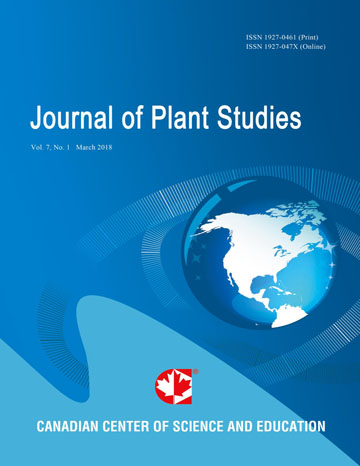Agronomic Performance of Kenyan Orange Fleshed Sweet Potato Varieties
- Heritier Mbusa
- Kahiu Ngugi
- Florence Olubayo
- Benjamin Kivuva
- James Muthomi
- Felister Nzuve
Abstract
Sweet potato is one of the most important staple crops in Sub-Sahara Africa because of its supply of carbohydrates, vitamin A and C, fiber, iron, potassium and protein.The objective of this study was to determine phenotypic variation in diverse sweetpotato varieties for marketable roots, fresh root yield, fresh biomass weight, harvest index, beta carotene content and root dry matter content. Twenty five sweet potato genotypes were evaluated at two sites in two seasons in Kenya using a randomized complete block design of three replications. The results indicated that there were highly significantly variations for genotypes and sites for all the traits studied. There were no significant differences for genotype x site x season effects for the traits except for the number of marketable roots and fresh root yield. The mean fresh root was 32.19 t/ha,with the genotype Ininda expressing the highest fresh root yield of 54.79 t/ha. Genotypes, Naspot 13, Ejumula, Kabode, Vitaa and Tio-Joe gave the highest beta carotene content ranging between 11.830 and 10.040 mg/100g; with a mean of 5.384 mg/100g. The mean root dry matter content was 24.84 % with clones Amelia and Melinda showing the highest and lowest root dry matter content of 30.62 and 16.52 % respectively. Ten genotypes including Ininda, Erica, Jane, Naspot 13, Ejumula, Kabode, Vitaa, Tio-Joe, Amelia and Mayai were recommended as potential parents for sweet potato breeding program in Kenya.
- Full Text:
 PDF
PDF
- DOI:10.5539/jps.v7n2p11
Index
- AGRICOLA
- CAB Abstracts
- CABI
- CAS (American Chemical Society)
- CNKI Scholar
- Elektronische Zeitschriftenbibliothek (EZB)
- Excellence in Research for Australia (ERA)
- Google Scholar
- JournalTOCs
- Mendeley
- Open policy finder
- Scilit
- Standard Periodical Directory
- Technische Informationsbibliothek (TIB)
- WorldCat
Contact
- Joan LeeEditorial Assistant
- jps@ccsenet.org
